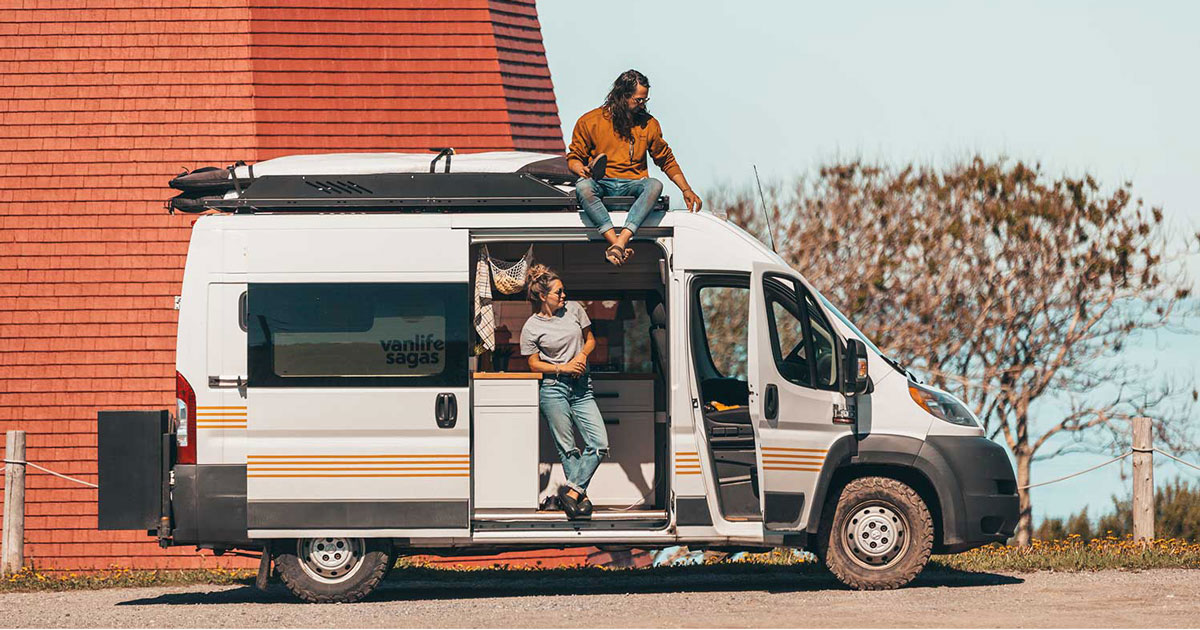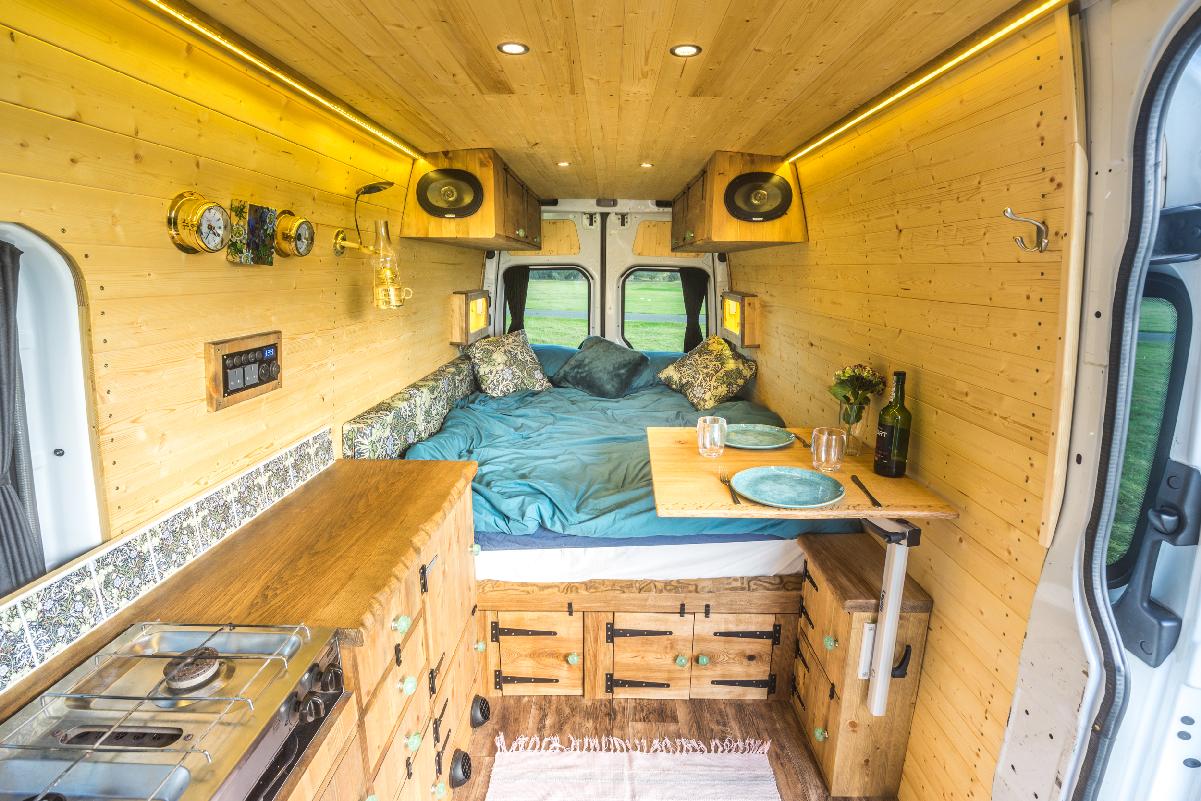
A few weeks ago, as part of the Gabby Petito/Brian Laundrie news coverage, I was introduced to the term “vanlife,” which is typically preceded by a hashtag. I’ve spent the past two weeks diving down the #vanlife rabbit hole. Here is what I’ve learned.
“Vanlife” is a lifestyle consisting of people who choose to live either part-time or fulltime in converted vans. Although each person has his or her own reasons for joining the #vanlife movement, most of these people do so by choice and enjoy road trips, travelling, nature, and seeing the country. For most members of the movement there is also a social element. This can be anything from meeting up with other vanlifers to sharing stories and videos on social media.
My first question about this movement was, why don’t these people just buy an RV, or a camper, or a tiny house? And it turns out that all of those things meet slightly different needs. Converting a van, especially if a person does the work themselves, is less expensive than purchasing an RV. Vans can also be used as a a daily driver, both during trips and when (if) the owner return home. Vans are easier to maneuver in traffic and can go anywhere any street legal vehicle will fit, including fast food drive-thrus and traditional parking spots. For RV owners, this often means towing an additional vehicle for use once they arrive at their destination. Unlike campers and RVs, a van does not require special storage in between trips — you can just park ’em in your driveway. And while tiny houses may seem like they scratch a similar itch they’re really not designed to be mobile, as moving them can cause structural damage, requires a strong vehicle to tow them, and can be quite expensive (I’ve read estimates of $1/mile).
There are so many variables and differences between #vanlife vans that every one is unique. Some people begin with
high-top delivery vans like the Ford Transit or the Mercedes-Bens Sprinter (think “Amazon delivery vans”). Depending on mileage, vans in that class can be picked up for $20k-$30k. A cheaper alternative is to start with a large passenger van, which trades cost for head room. My local Craigslist has several vans in the $5k-$7k range, depending on condition and miles. At the bottom end of the spectrum are minivans, which are the least expensive option (and the one that gets the best gas mileage), but also the smallest.
As for the conversions, the only limiting factors are the owner’s imagination and their pocketbook. I’ve virtually looked at dozens of van conversions on YouTube over the past two weeks. I’ve seen kitchens with running water, induction stoves, refrigerators, and microwaves. Like tiny houses, these vans take advantage of every single inch of storage, adding shelves to the rear doors and recessed lighting in the ceiling. I saw one van with a pull-out drawer long enough to store skis and fishing poles. When it comes to bathrooms, some of them have cassette toilets, some of them have composting toilets, some of them have five-gallon buckets with trash bags as liners, and some of them simply watch for restrooms at gas stations. (A lot of #vanlife people own memberships to national gyms like Planet Fitness, so they take a shower in any city.) There really is something for every budget in this movement.

Another thing to consider is power. The most common solution seems to be a combination of an additional deep-charge battery (or two) that is charged either by the car’s alternator or one or more solar panels mounted to the roof of the van. Most of the vans have power inverters, offering USB, AC, and DC charging ports. Some of the vans barely seem to have enough power to run USB fans and charge cell phones overnight; others, especially solar solutions, never need to plug-in. Some vans power everything from a portable battery charger that gets replenished while driving. Again, there are a dozen ways to skin this cat, depending on your needs.
Another advantage vans have over RVs and campers is the ability to “stealth camp.” My first thought was, “don’t these people just park at Walmart?” Some of them do; unfortunately, more and more Walmarts have signs prohibiting overnight parking. On YouTube I’ve seen people parking their vans on the street, in hotel parking lots, 24-hour businesses like gyms and laundromats, apartment complexes, and industrial businesses. Some people even park in residential areas. Along with Walmart, there are several other big-box stores that are friendly to campers including Home Depot, Lowe’s, Cabelas, and most deliciously, iHop. The key to “stealth” camping is to blend enough to avoid anyone knocking on your window in the middle of the night asking who you are and what you’re up to.
I was surprised to find so many websites, Instagram accounts, and YouTube channels dedicated to #vanlife. It feels like every person living in their van has a social media presence and/or their own brand. Along with conversion videos, there are how-to videos, inspirational videos, and simply “camping diaries.” Most if not all of these people are monetizing their output. Some make enough to pay for their travels.
One of the exciting things about creating a van camper (vamper?) is that you can do it a little at a time. I suppose with little more than a mattress in the back and an Igloo cooler you could set out to rough it. Just for fun, my buddy Jeff came up with a list of things I would need if I were going to convert a van and we hit $10k pretty quickly. I’ve seen complete conversions done for $3k and some done for $30k. There really is something for every income and skill level.
If you’re wondering whether or not I’ve already purchased a van… not yet? All that custom woodwork and wiring seems beyond my current skill level. The idea of toodling around the country doing remote work and sleeping in a van does sound like fun, but I’m not sure for how long. I do enjoy a good road trip, but a van would have to be pretty comfortable for me to consistently pick one over a Holiday Inn. For every #vanlife video of someone waking up and enjoying a beautiful sunrise, there’s another one showing the easiest way to poop in a five-gallon bucket.
Here’s a video showing 10 different van builds. As you can see, each one is completely unique.
And finally, here’s one of my favorites. This conversion was completed by an 18-year-old girl named Anna with very little building experience who converted a 1997 Chevy van into a great living space. This is the video that gives me hope that I might be able to complete a conversion of my own someday.


